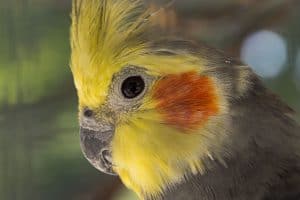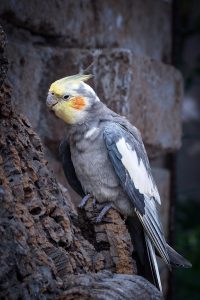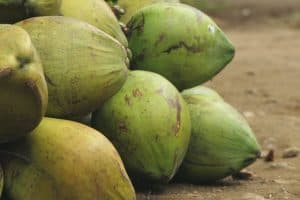Discovering your cockatiel’s feathers scattered around their cage can be alarming. It’s a sign they’re molting, a natural process where birds shed old feathers to make way for new growth. But, as a dedicated pet owner, you might wonder exactly what to do when your cockatiels molting.
Molting can be a stressful time for these little creatures, affecting their mood and overall health. I’ll guide you through the essentials to ensure your feathered friend remains comfortable and healthy during this period. From optimizing their diet to tweaking their environment, there are several steps you can take to help your cockatiel navigate this phase smoothly. Let’s dive into how you can support your pet through their molting season.
What to Do When Your Cockatiels Molting?
Cockatiel molting is a natural, essential process that ensures your pet remains healthy by replacing old feathers with new growth. Recognizing why molting occurs and identifying the signs and stages can help you better care for your feathered friend during this time.
Why Cockatiels Molt
Molting allows cockatiels to shed worn-out or damaged feathers and replace them with fresh ones. This rejuvenation is crucial for their ability to fly and regulate body temperature. Typically, cockatiels experience their first molt around six months of age, and thereafter, they molt annually or semi-annually depending on health and environmental conditions.
The process is driven by hormonal changes that respond to factors such as daylight duration and seasonal shifts. If molting aligns with these natural cycles, your cockatiel’s immune system remains intact, and the process runs smoothly, ensuring they’re well-equipped for survival.
Signs and Stages of Molting
Identifying the onset of molting in cockatiels isn’t difficult if you know what symptoms to look for. You may first notice an increase in feathers on the floor of the cage or beneath their roosting places. As the molt progresses, pin feathers—new, developing feathers that initially appear as small, waxy beads on your bird’s head and body—become visible. These pin feathers are critical as they eventually grow, burst open, and mature into full feathers.
Throughout the molting process, which can last several weeks, your cockatiel may appear less vibrant and slightly scruffy. This is a normal part of the stages of molting and nothing to be worried about. The entire process includes losing small feathers first, followed by wing and tail feathers, which may impact their flying ability temporarily. Watch for signs of abnormal molting, such as patchy feather loss or irritation around new feathers, which can indicate stress or dietary deficiencies.
By understanding the molting process, you ensure that care remains optimal and feathers grow back healthily and full.
Supporting Your Cockatiel During Molting
Molting, a natural and essential process for cockatiels, necessitates additional support from pet owners. During this period, cockatiels shed old feathers and grow new ones, which is crucial for their ability to fly and regulate body temperature. My guide below emphasizes how to enhance your cockatiel’s comfort, ensure proper nutrition, and maintain good hygiene to support them through molting.
Enhancing Comfort
To reduce stress and enhance comfort during molting, I maintain a calm environment in my cockatiel’s living area. This includes minimizing loud noises and sudden movements around their cage. Because molting increases their sensitivity, I provide extra soft materials in their cage for bedding, ensuring a gentle surface that prevents irritation from new pin feathers sprouting.

I also adjust the household humidity level, as a moderate humidity helps soften the new feathers, making them less prickly as they emerge. Installing a humidifier near the cage can achieve this, especially in dryer climates or seasons. Additionally, ensuring that the cage is kept in a draft-free area where natural sunlight can reach, but not direct sun, helps my cockatiel regulate their body temperature and stimulates healthy feather growth.
Proper Nutrition
Feathers are largely made up of protein, so during molting, I increase my cockatiel’s protein intake to support new feather growth. I incorporate high-quality protein sources such as boiled eggs and small amounts of lean cooked meats into their diet. I also supply foods rich in vitamins and minerals, like dark leafy greens and cuttlebone, which provide calcium and help support the immune system.

Since molting is energy-intensive, I ensure constant access to fresh water and fresh food. A balanced diet not only supports feather regrowth but also boosts overall health, keeping stress levels lower which is important as stress can exacerbate flight feathers plucking and other symptoms of discomfort.
Bathing and Hygiene
Regular bathing is crucial during molting to help remove dust, dander, and loose feathers, which eases the growth of new feathers. I provide a shallow dish of lukewarm water for my cockatiel to bathe in, ensuring it’s clean and changed daily. Bathing not only keeps their feathers in good condition but also reduces the itchiness associated with molting.
After bathing, it’s important to ensure that my cockatiel is completely dry and warm. I gently pat them with a soft towel and keep them out of drafts until they are dry. Preening, or grooming themselves with their beak, also helps them align new feathers and remove sheaths from new growth. Encouraging preening by providing a safe and comfortable environment is another way I help my cockatiel during their molt.
By understanding and implementing these care measures during my cockatiel’s molting phase, I help ensure they are comfortable, healthy, and ready to regrow beautiful new feathers.
Behavioral Changes and How to Respond
When cockatiels molt, they undergo various behavioral changes. I find it critical to recognize and respond effectively to these changes to ensure the well-being of my pet.
Managing Stress and Discomfort
During molting, cockatiels often experience increased stress and discomfort due to the growth of new feathers, including pin feathers, which are particularly sensitive. To manage this, I make sure to adjust the environment to reduce stress factors. Keeping the cage in a quiet area away from loud noises or frequent disturbances helps immensely.
Additionally, optimizing household humidity can alleviate dry skin and feather discomfort, promoting healthier feather growth. It’s also beneficial to include gentle grooming sessions to help them shed old feathers and ease the discomfort of pin feathers. However, careful handling is paramount to avoid damaging the new feathers, especially the blood feathers which are still forming and are very delicate.
Encouraging Socialization and Exercise
Molting can also make cockatiels feel vulnerable, which might affect their social behavior. I maintain a routine that encourages gentle socialization to keep my bird from becoming withdrawn. Spending time speaking softly, playing calm music, or placing their cage near but not directly next to another bird’s cage can help.
It’s also crucial to ensure they engage in mild exercise which supports their health and aids in the growth of strong new feathers. Providing toys that encourage natural preening behaviors or light physical activity, such as swinging or climbing, can be very beneficial. This not only keeps their body active but also supports emotional health during the potentially unsettling molting period.
Molting is a critical phase in your cockatiel’s life that demands extra care and attention. By recognizing the signs and understanding the process you can make this period less stressful for your feathered friend.
Remember it’s not just about maintaining physical health but also emotional well-being. With the right environment, help from avian vet and diet you’ll help your cockatiel emerge from molting healthier and happier ready to show off their vibrant new body feathers. Here’s to ensuring a smooth and comfortable molting season for your beloved bird!
Frequently Asked Questions
What are the signs of molting in cockatiels?
Molting signs in cockatiels include finding increased feathers on the floor and visible pin feathers on the bird. During this period, cockatiels may also show changes in behavior, such as being less active or slightly irritable.
How can I make my cockatiel comfortable during molting?
To make your cockatiel comfortable during molting, provide a stress-free environment, maintain optimal humidity levels, and ensure a nutritious diet rich in proteins and vitamins. Regular bathing and grooming can also help manage discomfort associated with molting.
What should I feed my cockatiel during its molting period?
Feed your cockatiel a high-protein diet during molting to support feather regrowth. This includes offering foods such as cooked eggs, high-quality seed mixes, and fresh fruits and vegetables rich in vitamins and minerals.
How does proper bathing benefit a molting cockatiel?
Bathing is beneficial for molting cockatiels as it helps remove old feathers and aids in the release of new feathers. It can also soothe skin irritation associated with the process. Ensure regular, gentle bathing to keep the skin and new feathers healthy.
Can behavioral changes occur in cockatiels during molting?
Yes, behavioral changes can occur. Cockatiels might become more withdrawn, less active, or show signs of irritability. These changes stem from the discomfort and energy drain associated with growing new feathers. Gentle interaction and avoiding stressful situations can help mitigate these behaviors.
Why is it important to manage a cockatiel’s environment during molting?
Managing the environment is crucial as stress can exacerbate molting difficulties. Keeping the environment calm, stable in temperature, and away from loud noises helps minimize stress, aiding in smoother and healthier feather regrowth.
When is the peak molting period for cockatiels?
The peak molting period for cockatiels can vary but generally occurs when there is a change in season or daylight hours. Observing your cockatiel and consulting with a vet can provide specific insights based on your pet’s condition and environment.
For more comprehensive insights and tips on cockatiel care and related topics, explore our additional articles. Find out if leeks are a safe treat for your bird in Can Cockatiels Eat Leeks?. Curious about kidney beans? Learn whether they are suitable for your cockatiel by reading Can Cockatiels Eat Kidney Beans?.
Ensure your pet’s environment is safe by checking out Are Paint Fumes Bad for Cockatiels?. For an interesting take on health, read about the effects of sweets in Chocolate and Dental Health. Finally, understand common cockatiel behaviors with Why Does a Cockatiel Stand on One Leg?. Each of these articles is packed with valuable information to help ensure your cockatiel’s health and happiness.






Very interesting points you have noted, appreciate it
for posting.Money from blog